The Truth About Organic Makeup Dupes: Are They Worth It?
flareAI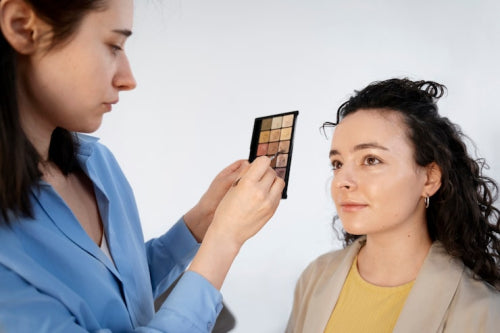
Quick Listen:
Imagine the allure of late-night scrolling on Instagram, your eyes heavy from the day's grind, when a TikTok clip bursts onto your feed: an influencer's radiant skin transformed by a so-called "dupe" for that iconic organic foundation everyone's obsessing over. At a steal compared to the original, it's impossible not to hit "add to cart." I made that mistake once applying what promised perfection but delivered nothing but flakes and a peculiar odor that had my skin in revolt by dawn. This personal fiasco ignited my investigation into The Truth About Organic Makeup Dupes: Are They Worth It? a debate gaining urgency as the clean beauty movement surges worldwide, from Dubai's vibrant souks to Singapore's steamy avenues.
Many women feel trapped by makeup that hides flaws but risks irritation and hidden toxins. This daily choice weighs heavily, dimming confidence over time. Liht Organics invites you to embrace beauty differently. With up to 90% USDA-certified organic ingredients, our vegan, cruelty-free products deliver vibrant color and gentle care, letting you glow with confidence, knowing your skin is nurtured, not compromised. Shop Now!
Defining the Dupe: What Makes Organic Makeup a True Stand-In?
In the fast-paced arena of beauty trends, where buzzwords fly as freely as product launches, clarifying "dupe" and "organic" is essential. A dupe slang for duplicate aims to replicate a luxury item's aesthetics, texture, and efficacy at a fraction of the cost. Picture a $10 liquid lipstick vying to match the velvet finish of its $40 counterpart. Infuse "organic" into the equation, and complexity arises. Authentic organic makeup draws from nature's bounty, vetted by rigorous standards from organizations like the USDA or ECOCERT, typically featuring at least 80% plant-derived components free from synthetic villains such as parabens, phthalates, and sulfates.
Organic dupes, however, pledge this eco-friendly elegance on a budget. Manufacturers inundate shelves with "nature-inspired" blends, deploying terms like "botanical" and "pure" to captivate sustainability-minded consumers. Yet, without stringent oversight, these can veer into greenwashing territory. In the United Arab Emirates, where the natural cosmetics sector is forecasted to generate US$21.47 million in revenue by 2025, such alternatives proliferate from mall kiosks to online bargains on platforms like Namshi's lifestyle hub. Beauty experts on forums like Reddit caution that true equivalence demands ingredient parity at the molecular scale; otherwise, it's a roll of the dice on durability and safety. From my testing, many boast 95% organic claims yet harbor inexpensive binders, yielding formulas heavy on marketing, light on legitimacy.
This ambiguity isn't just semantic it's a consumer rights issue. Certifications provide a shield, ensuring claims hold water. For instance, USDA Organic mandates verifiable sourcing, while ECOCERT emphasizes minimal processing. Dupes bypassing these often rely on vague "natural" labels, leaving buyers to parse fine print amid a market flooded with 10,000-plus clean beauty SKUs annually. In regions like India and Malaysia, where regulatory frameworks vary, discerning shoppers must prioritize transparency to avoid pitfalls. Understanding these nuances empowers informed choices, addressing common hesitations around product clarity and ingredient transparency.
The Allure of Affordability: Why Organic Dupes Captivate Consumers
Let's be candid: Who hasn't flinched at the sticker shock of a high-end organic eyeshadow quad? Enter organic dupes, the economical saviors rendering clean beauty less exclusive and more inclusive. Their merits are undeniable. Primarily, they're cost-effective gateways for novices exploring plant-based regimens without hefty upfront investments. In burgeoning economies such as India and Malaysia, where expanding middle classes demand eco-swaps, these imitators level the playing field, rendering non-toxic glamour attainable for everyday routines.
Ecologically, they shine brighter. By eschewing petroleum-based sludge prevalent in traditional makeup, organic dupes favor biodegradable botanicals that lessen the toxic burden on waterways and wildlife. For those with reactive skin prevalent in dry expanses like Saudi Arabia or sun-baked Australia these gentler alternatives mitigate synthetic-induced flare-ups. Research underscores this edge: Natural actives excel at quelling inflammation over synthetic analogs, offering relief to humidity-plagued complexions in Singapore's tropical clime. Ethically, numerous dupes stem from boutique labels championing equitable trade, syncing with the worldwide organic personal care boom, slated to swell to $38.39 billion by 2029.
Dive into TikTok or Instagram, and you'll witness creators pitting dupes against originals in split-screen showdowns, their blends indistinguishable under studio glow. This visual validation fosters empowerment a route to luminous looks minus remorse or ruinous expense. In the US, where social media sways 70% of beauty buys, such demos fuel a 15% uptick in dupe searches yearly. Yet, as my own trial-by-blush fiasco illustrates, the euphoria can evaporate quicker than a matte finish in midday heat. While dupes democratize access, they occasionally sacrifice substance for show, prompting questions of long-term value.
Beyond savings, dupes spur innovation. Smaller brands experiment boldly, incorporating regional staples like Australian native botanicals or Indian turmeric extracts, tailoring to local climates and customs. This localization not only boosts relevance but cultivates trust, countering skepticism about unfamiliar ingredients. For global nomads shuttling between Riyadh's opulence and Sydney's shores, versatile dupes promise consistency without compromise or so the pitch goes.
Unveiling Flaws: The Hidden Costs of Organic Dupes
Beneath the glossy veneer, organic dupes reveal fractures that undermine their promise. Allure fades when reality intrudes; not every shimmer equates to substance nor every oil to jojoba's purity. Commence with endurance: Premium waterproof organics endure 12-hour marathons, but dupes often succumb to perspiration or moisture, a torment in the UAE's sweltering haze or India's drenching monsoons. My encounter with a "pure" concealer that evaporated mid-meal, demanding messy reapplications akin to abstract art, underscores this frailty.
Ingredient authenticity poses steeper risks. Bold proclamations of "organic" belie loose regulations permitting synthetic interlopers. Discussions on Quora illuminate this: While genuine naturals sidestep carcinogens like coal tar, bargain dupes may conceal adjuncts igniting sensitivities or exacerbating conditions. Ethical lapses compound the issue trails leading to opaque supply chains with labor inequities, betraying sustainability vows. In Australia, stringent clean beauty audits expose imitators aping icons like ILIA or Kosas, yielding reports of irritant-induced burns among vigilant users.
Preservative paucity curtails viability; that economical $15 blush may rancidify into an unusable sludge ere depletion. Economically, initial thrift unravels via recurrent buys amid subpar staying power, inflating true costs. As the natural makeup arena hurtles forward at a 12.6% CAGR through 2032, pundits stress that enduring worth resides in candor, not fleeting fads. In trust-centric bastions like the US and Saudi Arabia, these shortcomings corrode brand fidelity swifter than inferior tint. Moreover, inconsistent pigmentation across batches frustrates precision seekers, while limited shade inclusivity alienates diverse tones prevalent in multicultural hubs like Singapore and Malaysia.
Regulatory disparities amplify woes. In the EU, stringent REACH protocols bar hazards, but laxer environs permit variances, breeding inconsistency. Consumers grappling with these coupled with scant education on formulations foster distrust, a barrier authentic brands must dismantle through rigorous disclosure.
Elevating Standards: Championing Genuine Organic Innovators
Confronted by dupe disillusionment, astute enthusiasts pivot to paragons of probity labels innovating beyond imitation with unassailable ethics. Spotlight high-caliber organics surpassing 80% certified pristine botanicals, engineered to nurture alongside adornment. Far from dowdy talc-laden relics, these are silken serums hydrating profoundly, melding flawlessly over myriad undertones while fortifying against urban pollutants and UV onslaughts.
Envision foundations harnessing fruit-sourced hues and herbal essences potent enough for labial dabs or, improbably, incidental tasting, embodying "edible" safety. Forged in precision locales like the USA and Singapore, they fuse international benchmarks with indigenous nuance, garnering acclaim from influencers to elites. Exemplifying excellence, Liht Organic's Youth Elixir Liquid Foundation clinched the Best Foundation (Clean Beauty) Blogger's Choice Award in 2025, its confectionary aroma and adaptable opacity enduring executive huddles or Malaysian seaside jaunts. Vegan, cruelty-free, and sans parabens, these elixirs preempt gripes: Crystal-clear rosters dispel opacity, affirming dermal benevolence and quashing trust deficits.
Procure these treasures at key outposts, such as Faces outlets in the UAE or The Green Collective in Singapore, where discerning patrons integrate them into wellness-centric rituals eclipsing mere aesthetics. 2025 trajectories herald this evolution algae-derived actives and recycled flora commandeering displays from Sydney emporia to Riyadh boutiques. Eschew phantoms; embrace luminosity. These verities forge allegiance via tangible triumphs: Diminished eruptions, vivified visages, and the uncommon boon of cosmetics masquerading as cosmeceuticals.
Mastering the melee demands acumen. Scrutinize seals, peruse unvarnished Instagram Reels for veracity, and internalize: Veritable organic embodies evolution, not infallibility. Amid a panorama burgeoning with prospects from American artisanal ateliers to Indian herbal ateliers the imperative is alignment with ethos and epidermis imperatives. For those wavering on ingredient intel, brands furnishing interactive glossaries or AR shade trials bridge informational chasms, fortifying confidence.
The Ultimate Verdict: Transcending the Dupe Debate
Discarding remnants of that regrettable dupe from my bureau, clarity emerges: Organic makeup dupes suit tentative forays, yet pale as proxies for the bona fide. In an authenticity-starved sphere propelled by a natural cosmetics domain aspiring to $45.60 billion by 2030 merit inheres in resilience. Be it braving Dubai's thermal tempests or Delhi's bustling transits, elect compositions that tend as assiduously as they veil. Your dermis, alongside our orb, recompenses with an effulgence no facsimile forges. When enticement beckons anew, halt. Grasp the authentic. Your reflection and rectitude shall steer unerringly.
Frequently Asked Questions
What exactly are organic makeup dupes and how do they differ from authentic organic products?
Organic makeup dupes are budget-friendly alternatives that aim to replicate the look, texture, and performance of high-end organic cosmetics at a fraction of the cost. While authentic organic makeup contains at least 80% plant-derived ingredients certified by organizations like USDA or ECOCERT, many dupes use vague "natural" labels without stringent oversight. This can lead to greenwashing, where products claim to be organic but may contain synthetic fillers and cheaper binders that compromise quality and safety.
Are organic makeup dupes worth buying for sensitive skin?
Organic makeup dupes can be beneficial for sensitive skin as they typically avoid petroleum-based ingredients and harsh synthetics found in traditional makeup. Natural actives in these products excel at reducing inflammation compared to synthetic alternatives, making them suitable for reactive skin in various climates. However, quality varies significantly among dupes - some may lack proper preservatives leading to shorter shelf life, or contain undisclosed synthetic ingredients that could trigger sensitivities, so careful ingredient scrutiny is essential.
What are the main drawbacks of choosing organic makeup dupes over premium brands?
The primary drawbacks of organic makeup dupes include poor longevity (often failing to withstand humidity, sweat, or long wear), inconsistent pigmentation across batches, and potential ingredient authenticity issues due to loose regulations. Many dupes also suffer from limited shade inclusivity and may contain synthetic additives despite "organic" claims. While initially cost-effective, frequent repurchasing due to poor staying power can make dupes more expensive long-term than investing in quality certified organic makeup that offers better performance and ingredient transparency.
Disclaimer: The above helpful resources content contains personal opinions and experiences. The information provided is for general knowledge and does not constitute professional advice.
You may also be interested in: Sheer Radiance Blush – Liht Organics
Many women feel trapped by makeup that hides flaws but risks irritation and hidden toxins. This daily choice weighs heavily, dimming confidence over time. Liht Organics invites you to embrace beauty differently. With up to 90% USDA-certified organic ingredients, our vegan, cruelty-free products deliver vibrant color and gentle care, letting you glow with confidence, knowing your skin is nurtured, not compromised. Shop Now!
Powered by flareAI.co
Share
You May Also Like
-

Discovering Self-Love Through Clean Beauty: A Guide to Nurturing Your Inner and Outer Self
In the journey of self-love, every action, thought, and choice we make towards ourselves can be a powerful affirmatio...
-

The Science Behind Organic Makeup and Pregnancy: A Gentle Choice for Moms-to-Be
wp:paragraph Pregnancy is a wonderful and exciting journey that comes with added responsibilities of ensuring the ...
-
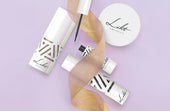
Liht Organics Black Friday: Enhance Your Beauty Routine with Vegan, Organic, and Natural Essentials!
As the holiday season approaches, there’s a sparkle in the air, and we at Liht Organics are thrilled to add a touch o...
-

Organic Makeup That Heals As It Conceals
Liht Organics Empowers Women With Only The Best For Their Beauty NeedsLiht Organics combines the best of both worlds:...
-
![[FEATURE] Liht Organics to debut at TFWA Asia Pacific show](//lihtorganics.com/cdn/shop/articles/1_1.png?v=1759328400&width=170)
[FEATURE] Liht Organics to debut at TFWA Asia Pacific show
‘Organic makeup that’s safe enough to eat’ — Liht Organics to debut at TFWA Asia Pacific show by Hannah Tan | 24 Apri...
-
![[FEATURE] The Singapore-based organic makeup brand is a first-time exhibitor at this year’s TFWA Asia Pacific Exhibition in Singapore in May 2025](//lihtorganics.com/cdn/shop/articles/2_1.png?v=1759328386&width=170)
[FEATURE] The Singapore-based organic makeup brand is a first-time exhibitor at this year’s TFWA Asia Pacific Exhibition in Singapore in May 2025
TFWA Asia Pacific preview: Liht Organics targets expansion in travel retail By DFNI Staff Writer The Singapore-bas...
-
![[FEATURE] Travel Retail Awards 2025 finalists - Best Make-up Product Color-Intense Liquid Lipstick – Liht Organics](//lihtorganics.com/cdn/shop/articles/4_e2f54f0f-fcd1-46e7-9990-fc9d29e35131.png?v=1759328382&width=170)
[FEATURE] Travel Retail Awards 2025 finalists - Best Make-up Product Color-Intense Liquid Lipstick – Liht Organics
Revealed: Travel Retail Awards 2025 finalists By Trbusiness Editor | Wednesday, 23 July 2025 15:21 TRBusiness is th...
-
![[FEATURE] Liht Organics targets expansion in travel retail](//lihtorganics.com/cdn/shop/articles/3_1.png?v=1759328346&width=170)
[FEATURE] Liht Organics targets expansion in travel retail
Organic makeup that’s safe enough to eat: Liht Organics targets expansion in travel retail By Laura Shirk Liht Organ...
-

[FEATURE] Gulf News: TikTok’s strawberry girl makeup trend: How to achieve that rosy glow inspired by Hailey Bieber
Berry, berry, strawberry, love strawberry, like BTS’s J-Hope, the band’s strawberry enthusiast once said. If only we ...
-

[FEATURE] Gulf Business Magazine : Liht-ing it up
Our founder, Nerissa Low was interviewed by Gulf Business, where she discussed her experience launching Liht, an orga...
-

[FEATURE] Daily Vanity: 11 local beauty brands owned by women – you’d be surprised how many of them started in their kitchens!
When we give a shout-out to homegrown beauty businesses, we aren’t just doing it for the sake of supporting local. Th...
-

[FEATURE] Entrepreneur ME : UAE-Based Liht Organics' Nerissa Low On Crafting An Organic Makeup Brand For The Skin-Conscious Consumer
As is the case with the origin stories of so many startups out there, Liht Organics came into being after its founder...
-

Mother, Baby & Child Editor’s Pick: Liht Organics Lights the Way
Excited to be the Mother, Baby & Child’s ‘Editors pick’ for their choice of Beauty brand.The article outlined the...
-
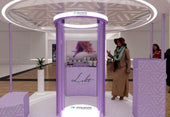
[FEATURE] EmiratesWoman - 8 Fabulous things to do in Dubai this weekend
by SARAH JOSEPHJANUARY 20, 2023Try the UAE’s first virtual reality makeup podium The popular VR-backed makeup exper...
-

Nerissa Low of Liht Organics On The Self-Care Routines & Practices Of Busy Entrepreneurs and Business Leaders
By Maria Angelova, CEO of Rebellious Intl.Date: 4 January, 2023Nerissa Low of Liht Organics On The Self-Care Routines...
-

Liht Organics: Meet the beauty brand that has caught the eye of the Royal Family of Bahrain
By Crystal Lee Digital Editor28 May 2021The world of clean beauty is, ironically, rather murky.That’s because the ter...
-

The latest luxury makeup and skincare drops, including serums, concealers, moisturisers and more
Allisa Noraini21 May, 2021It’s fine to splurge in the name of beauty. This new range of makeup and skincare drops are...
-

These SG Beauty Bosses Are Conquering The World Despite The Pandemic
First Singapore, then the US, China, Germany, Dubai, UK, South Korea, Malaysia, Hong Kong, Thailand, Australia… By...
-

Nerissa Low, Founder at Liht Organics
Written by Callum LaingPosted on December 26, 2020 10 min readNerissa Created Organic Makeup That Actually Improve...
-

Liht Organics – Makeup That Makes You
At Liht Organics, our mission is simple – to provide women (and men) with a safe experience when it comes to beauty s...
-

Why Should We Use Organic Makeup?
We cannot deny that cosmetics is one of our beauty essential item – it enhances our looks and conceals our flaws. Man...
-

Organic makeup and why your skin will love it: Liht Organics founder
By Jolene,July 27, 2020 |7 mins readOrganic make up in Singapore is a trend that is fast-catching on here as we becom...
-

[FEATURE] DC EDIT – Makeup & Confidence: Talking Self-love With Liht Organics’ Founder Nerissa Low
Makeup and confidence — the long, drawn-out fight that many of us have grappled with personally. I’m sure I’m not the...
-

[FEATURE] THE FEMALE CULTURE – I TRIED LIHT ORGANICS AND THIS IS HOW IT WENT
I’m a huge fan of makeup and I love testing out new products so I was pretty excited to get my hands on Liht Organics...
-

[FEATURE] SINGAPORE MOTHERHOOD – The Best Organic and Natural Skincare and Makeup for Pregnant and Breastfeeding Mums in Singapore
Pregnancy is a hormone-volatile period for women. One place where this makes itself seen and felt is on the skin. Som...
-

[FEATURE] AFTER CLINIC HOURS – 21 Back to Beauty Deals in Singapore (2020)
With spas and salons shuttered island wide for two months, I never thought I’d be this desperate for a good old’ Swed...
-

[FEATURE] KUL AL USRA MAGAZINE JUNE 2020
Choosing Pinks & Oranges this summer!Featured: Moisture Burst Lip Glaze in Pink Cupcake.
-
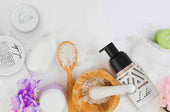
[FEATURE] Award-winning Organic Makeup Brand Liht Organics Gives Back to the Community & Environment During COVID-19
Singapore’s First Organic Makeup Brand with 100% Natural Makeup That Is Safe Enough to Eat Liht Organics promises org...
-

[FEATURE] COSMETICS DESIGN ASIA – COVID-19 ‘WAKE-UP CALL’: SINGAPORE’S LIHT ORGANICS SEES GLOBAL POTENTIAL AMID CLEAN BEAUTY CLAMOUR
Original article at: https://www.cosmeticsdesign-asia.com/Article/2020/06/26/Singapore-s-Liht-Organics-sees-globa...
-

[FEATURE] THE LIFESTYLE COLLECTIVE – BEAUTY SHOULD NEVER BE CRUEL
Date: June 24, 2020Author: Kristen Chen Liht (pronounced as light) Organics is a Singaporean organic makeup brand t...
-

[FEATURE] NÜYOU – 7 ONLINE PLATFORMS TO SHOP FOR CLEAN BEAUTY PRODUCTS
纯净美容(Clean Beauty)的美肤概念,再近几年来越来越受欢迎。随着消费者“爱自己”的美容意识逐步提升,对于用在脸上的所有物品、成分更为关注和讲究。以广义来讲,纯净美容主张使用“干净”成分和无毒配方,让肌肤的可能性损伤减到最小...
-

[FEATURE] COSMOPOLITAN MIDDLE EAST – 3 BENEFITS OF SWITCHING TO ORGANIC BEAUTY PRODUCTS THIS RAMADAN
By Cosmo – May 08, 2020Nerissa Low, founder of Liht Organics, shares the ultimate benefits of going organic this mont...
-

Nerissa Low of Liht Organics: “Seeing Light at the End of the Tunnel; 5 Reasons To Be Hopeful During this Corona Crisis”
Ely Weinschneider, Psy.D.May 8 · 9 min read …It shows us that everyone- whether we are rich or poor, regardless...
-

[FEATURE] AL MARA MAGAZINE APRIL 2020
-

[FEATURE] RetailME April 2020 – Liht Organics Stays Firm On Strengthening GCC Presence
-

[FEATURE] EMARAT AL YOUM NEWSPAPER – 27 MARCH 2020
English Translation:In spring and summer days, women love to have very light makeup in terms of color and texture, ...
-

[ARTICLE] WKND Magazine March 2020 – Know Your Organic Makeup
-

[FEATURE] AVIAMOST DUBAI – March/April 2020
English Translation:Lipstick with organic flowers. Thanks to the rich complex of natural ingredients, the lipstick...
-

[FEATURE] RUSSIAN EMIRATES (MAR/APR ISSUE)
Russian Emirates is a luxury lifestyle and fashion magazine covering information about the UAE, fashion, beauty, j...
-

[FEATURE] – KUL AL USRA MAGAZINE MARCH 2020
GET THE LOOK!
-

[FEATURE] IMAGES Retail ME – Liht Organics Announces GCC-Wide Expansion
Rupkatha Bhowmick Mar 10, 2020 The plan is to reach 75 Liht Organics retail touchpoints by June-July 2020 and touch...
-

[FEATURE] BABY & CHILD SPRING 2020 – NATURAL BEAUTIES
-

[FEATURE] AWQAT DUBAI – Liht Organics: The First Premium Organic Makeup Brand
ENGLISH TRANSLATION:Liht Organics – The First Premium Organic Makeup Brand Liht Organics, a premium organic beauty ...
-

[FEATURE] FRIDAY MAGAZINE – THE RETRO EYELINER LOOK
-

[FEATURE] MOTHER BABY & CHILD – VANITY ESSENTIALS – THE BEAUTY EDIT
-

[FEATURE] Masala! Magazine February/March 2020 Issue – Beauty Debut: Liht Organics
-

[Feature] – TimeOut Singapore – The Best Local Beauty and Skincare Brands In Singapore
For full article, click here.
-

[FEATURE] KUL AL USRA MAGAZINE – LIHT UP YOUR WORLD WITH LIHT ORGANICS
[ENGLISH TRANSLATION]Liht Up Your World With Liht OrganicsThe First Premium Organic Makeup Brand To Debut In The Mi...
-

[FEATURE] SINGAPORE TATLER – 9 Local Beauty Brands You Should Know Of
-

[FEATURE] nüyou August 2019 Issue – 15 Faces To Watch
-

[FEATURE] HONEYCOMBERS – Local Beauty Gurus: Singapore Beauty Brands You Need To Know About
-

[FEATURE] The Wellness Insider – Seeing The Liht With Founder Nerissa Low
-

[FEATURE] 联合早报 (LianHeZaoBao) – Women Entrepreneur Awards 2019 Coverage
-

[FEATURE] THE STRAITS TIMES Life – Clean beauty with a Singapore heart
-

Romantic Organic Makeup Looks for Valentine's Day: Tips, Tricks, and Product Picks
Valentine's Day is the perfect occasion to embrace the beauty of organic makeup. At Liht Organics, we believe in the ...
-
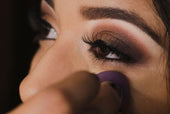
Enhance Your Eyes: A Guide to Eyeliner for Every Eye Shape with Liht Organics
Welcome to the Liht Organics blog, where we believe in celebrating the natural beauty of every eye shape. Today, we'r...
-
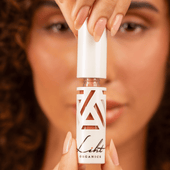
How to do makeup with only lipstick?
At Liht Organics, we believe in the power of clean beauty and the artistry of makeup. Makeup is more than just enhanc...
-

How to Clean Your Makeup Brushes in 6 Simple Steps
Cleaning your makeup brushes may seem like a tedious task, but it's an essential part of your beauty routine. Not onl...
-

Makeup Tips to Help You Look Your Most Flattering on Virtual Meetings!
After more than 2 years of work-from-home arrangement, and possibly hundreds of zoom calls and Google meet virtual me...
-
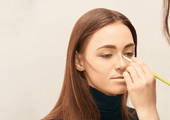
Learn How to Contour with This Simple Guide for Beginners
Want to take your makeup to the next level? Try contouring to achieve a more defined or sculpted look à la the Kardas...
-
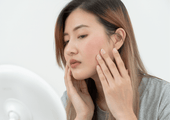
Essential and Easy Makeup Tips for Sensitive Skin
Living with sensitive skin conditions like eczema, psoriasis, and more is already not an easy feat. Throw in makeup t...
-

Raising Your Vibration: A Liht Organics Guide for Empowerment This International Women's Day
wp:paragraph As International Women's Day (IWD) approaches, it serves as a powerful reminder of the journey towards s...
-

The Beauty of Going Bare: Why Sleeping with Makeup is a No-No
Have you ever had one of those nights where you're too tired to clean off your makeup? You might believe, "Skipping...
-

Breast Cancer Awareness: Empower Your Beauty with Liht Organics Makeup
During October, we observe Breast Cancer Awareness Month as a way to unite and bring attention to breast cancer whil...
-

The Hidden Dangers of Carmine in Makeup Colorants: Embracing Healthier and Vegan Options
Makeup has become an integral part of our daily routines, allowing us to express our unique beauty. However, as we pr...
-

How can I ensure that my makeup products are organic and won't harm my skin?
When it comes to makeup, it’s important to be mindful of what you’re putting on your skin. With so many products on t...
-

[FEATURE] HONEYCOMBERS – BEST BEAUTY BUYS IN JULY
by Nicole NithiyahWhat’s hot in our beauty hit list: Honest thoughts and top beauty stories we’re swooning over. As w...
-

Liht Organics Introduces Exclusive Gift Sets: Enhance Your Beauty This Festive Season!
As the holiday season approaches and the year draws to a close, Liht Organics is thrilled to present two enchanting g...
-

Get Spooktacular with the Best Halloween Makeup Ideas using Liht Organics' All-Natural, Vegan, and Cruelty-Free Cosmetics!
With Halloween just around the corner, it’s time to let your creativity shine and transform yourself into a spooky,...
-

Celebrating World Animal Day with Liht Organics: Embracing Natural Cruelty-Free Makeup
wp:paragraph As we observe World Animal Day, the team at Liht Organics takes great pride in honoring our pledge to...
-

Reasons Why You Should Choose Cruelty-Free Cosmetics Instead!
With increasing exposés unveiling the ugly truth behind animal testing that goes on in the beauty industry, it is lit...
-

Celebrate Singles Day with Makeup That Empowers – 22% Off at LIHT Organics!
This Singles Day, treat yourself to beauty that goes beyond skin-deep. At LIHT Organics, we believe makeup is about s...
-

Preparing for the Cozy Beauty of Autumn: A Preview of Your Fall Look
As we bid farewell to the warm, sun-kissed days of summer, it’s never too early to start dreaming about the enchantin...
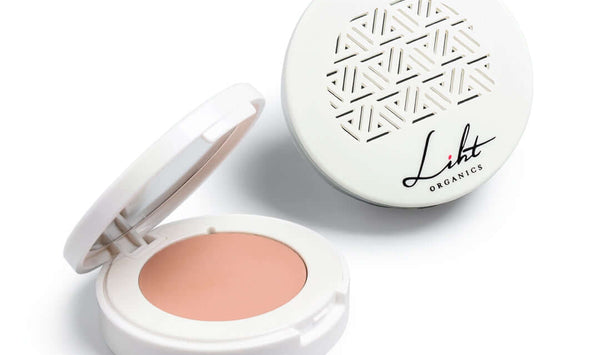
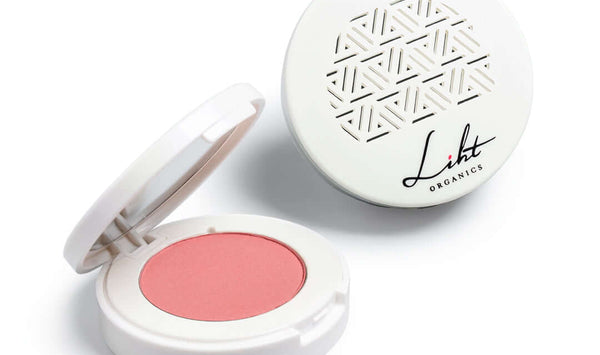
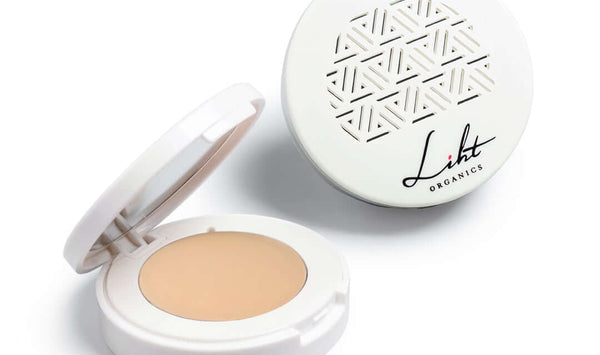
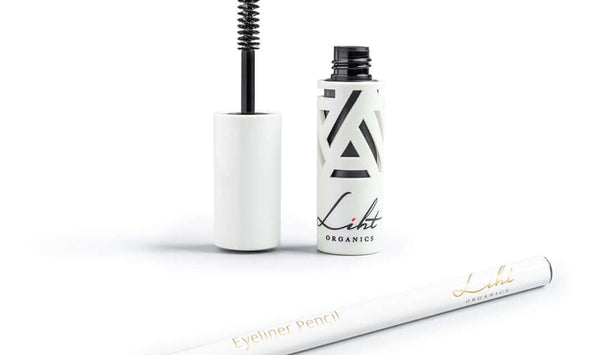
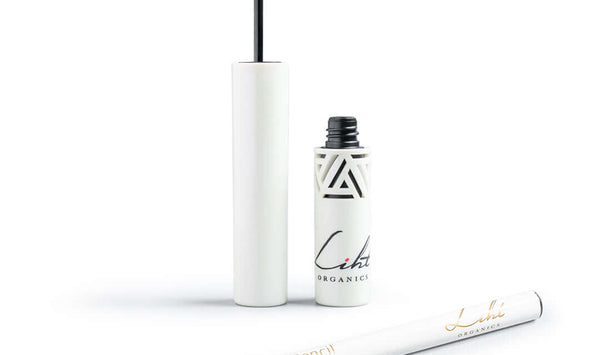
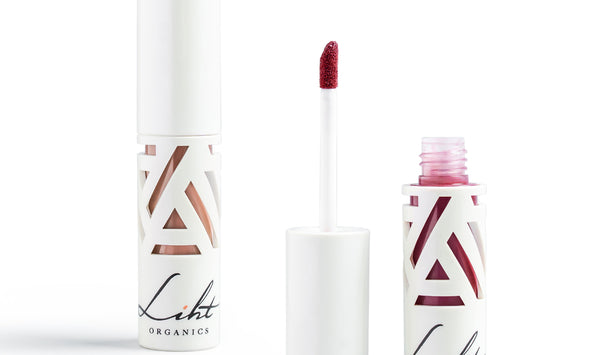
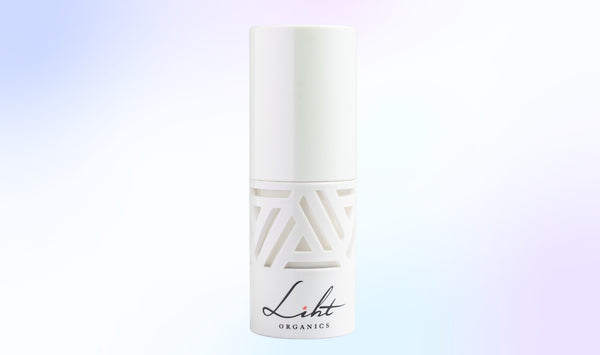

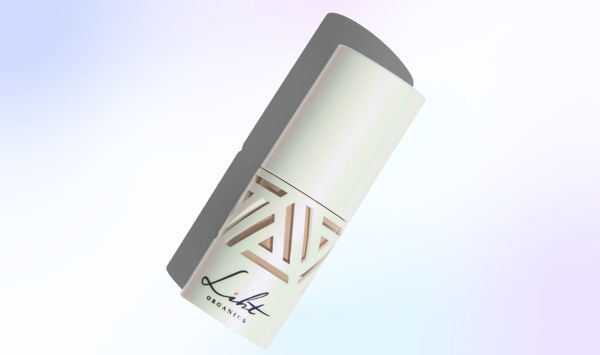
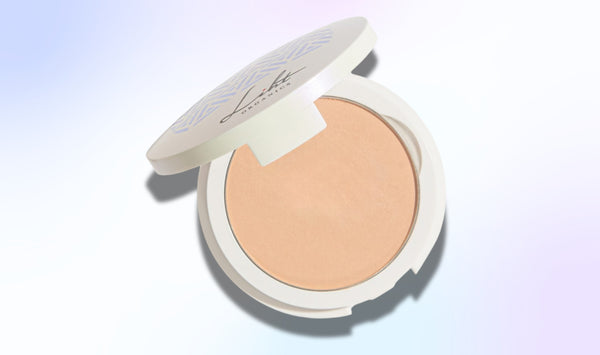
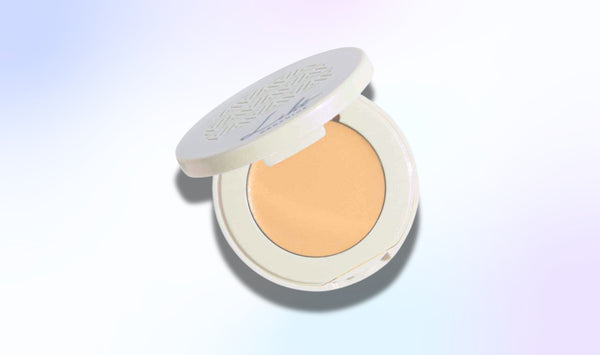
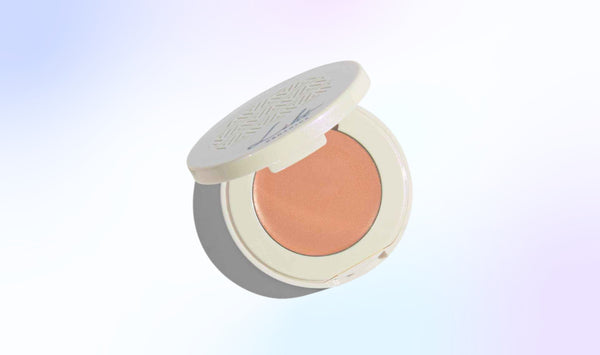
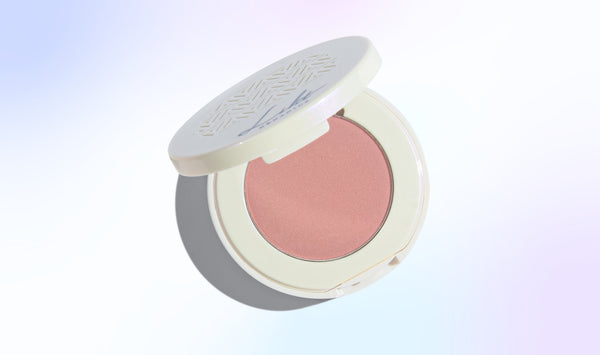
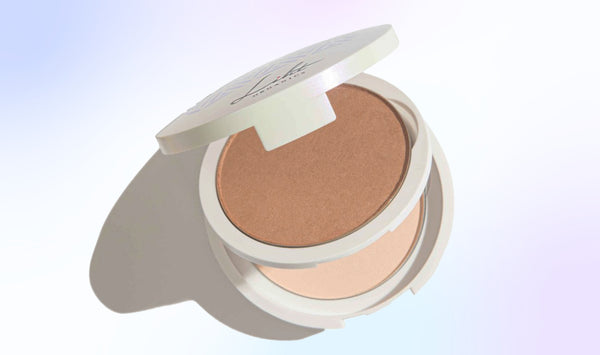
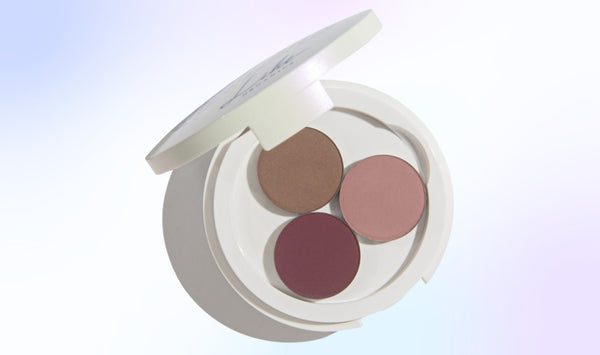
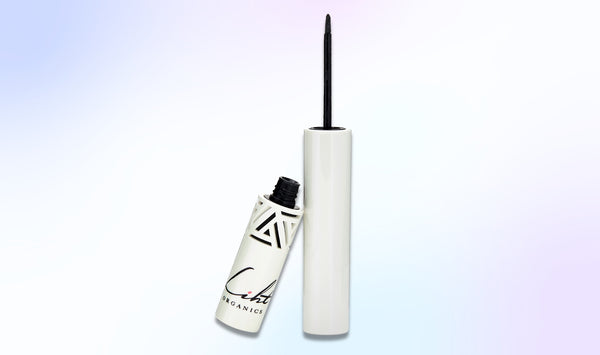
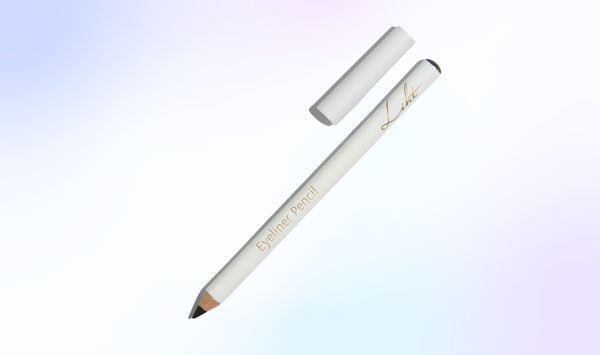
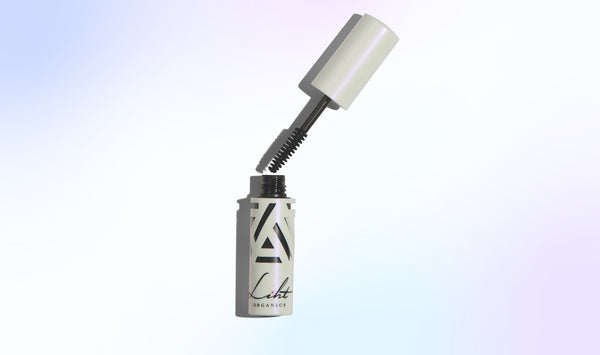
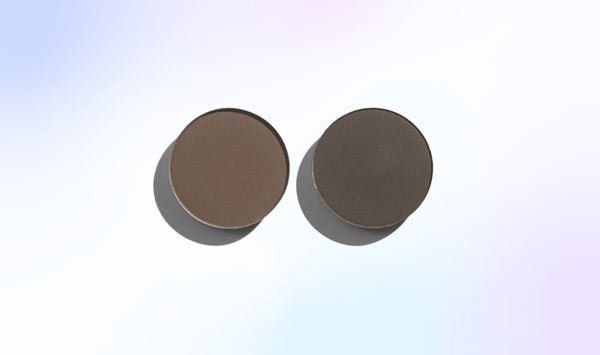
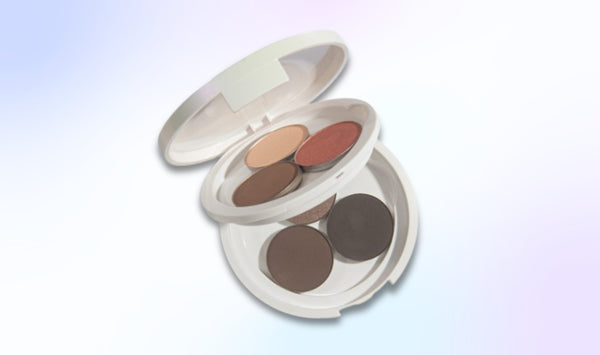
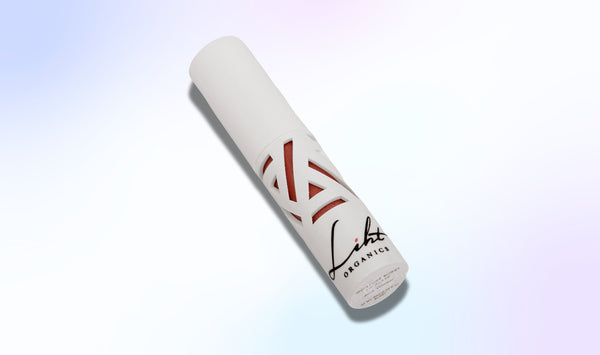
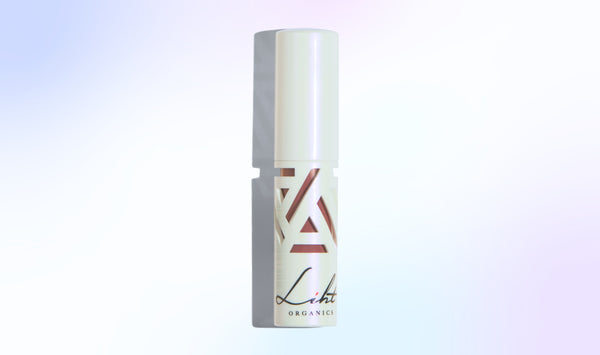
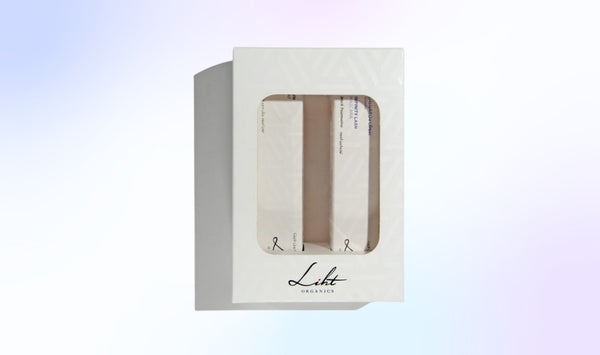
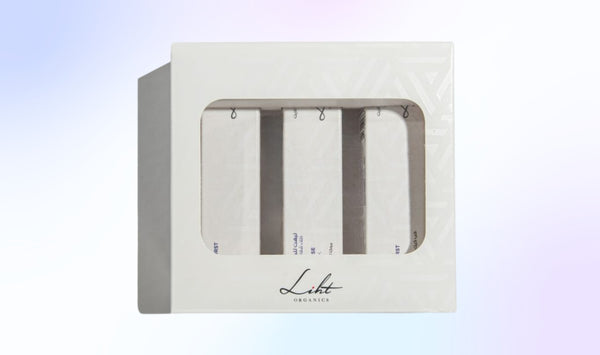


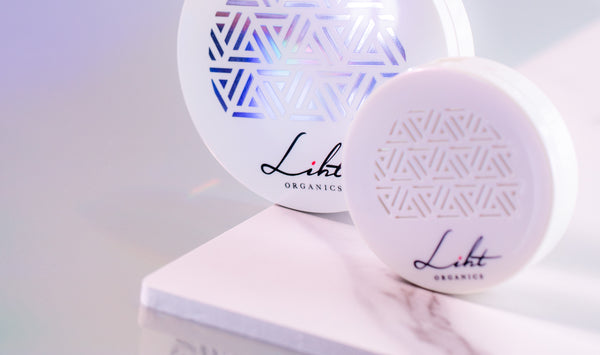
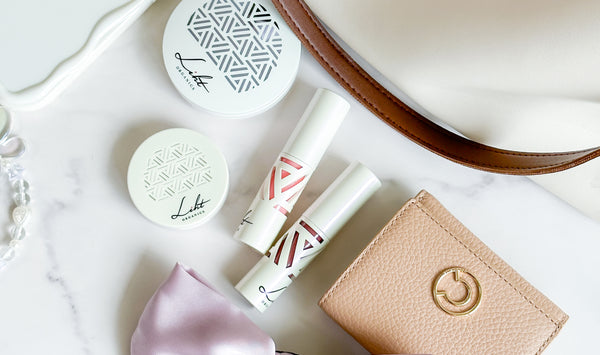
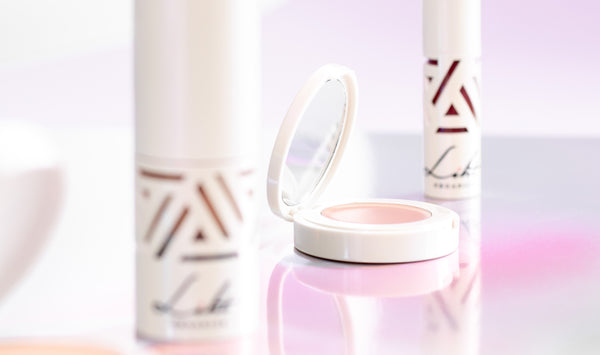




![[FEATURE] Liht Organics to debut at TFWA Asia Pacific show](http://lihtorganics.com/cdn/shop/articles/1_1.png?v=1759328400&width=170)
![[FEATURE] The Singapore-based organic makeup brand is a first-time exhibitor at this year’s TFWA Asia Pacific Exhibition in Singapore in May 2025](http://lihtorganics.com/cdn/shop/articles/2_1.png?v=1759328386&width=170)
![[FEATURE] Travel Retail Awards 2025 finalists - Best Make-up Product Color-Intense Liquid Lipstick – Liht Organics](http://lihtorganics.com/cdn/shop/articles/4_e2f54f0f-fcd1-46e7-9990-fc9d29e35131.png?v=1759328382&width=170)
![[FEATURE] Liht Organics targets expansion in travel retail](http://lihtorganics.com/cdn/shop/articles/3_1.png?v=1759328346&width=170)
































































